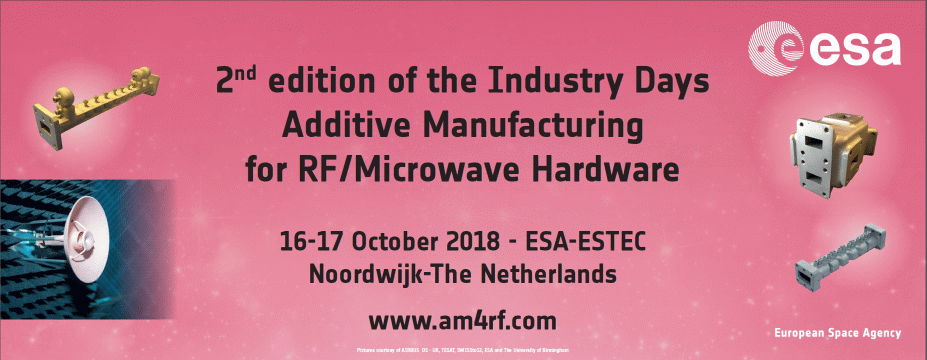Speaker
Description
This paper reports on some of the results from a one-year pilot project, funded by the UK Space Agency, to investigate polymer-based 3D printed guided-wave and quasi-optical components for spacecraft payloads. Although satellites have payloads covering a wide range of frequencies, this project focused on G-band (140 to 220 GHz) which is commonly used for weather satellites. A range of components, including straight waveguide sections, rectangular horn antennas, and off-axis parabolic mirrors, have been produced. These components have shown promising measurement results. This demonstrates that the 3D printing technology has the potential to overtake existing machined technologies in the not too distant future for general aerospace applications. At the meantime it is appreciated that further research is required to bring the technology to flight model readiness.
This project was undertaken by a consortium comprising Imperial College London (ICL) and the National Physical Laboratory (NPL). Over the past 5 years, the ICL-NPL team have already demonstrated that the electromagnetic performance of polymer-based 3D printed waveguides at X-band (8.2 to 12.4 GHz) and W-band (75 to 110 GHz) are commensurate with commercial waveguides. In addition, the team have successfully demonstrated many other components, notably X-band variable phase shifters, X-band twisted waveguides, W-band bandpass filters, and rectangular waveguides operating up to 1.1 THz. A brief review of these components will also be given in our talk.
Why your contribution is relevant for the event?
Our talk will address additive manufacturing from the perspective of its application to spacecraft payloads. The demonstrator components also operate at relatively high frequencies, i.e. G-band (140 to 220 GHz).
Our talk also covers other research undertaken by the ICL-NPL team during the past 5 years and over a wide frequency range, with novel components demonstrated.
Our unique consortium consists of a world-class academic institution having an established Additive Manufacturing Network (Imperial College London), the UK’s primary national laboratory (NPL) for undertaking traceable measurements (mechanical and electrical) at the highest achievable levels of accuracy and with industrial engagement.

